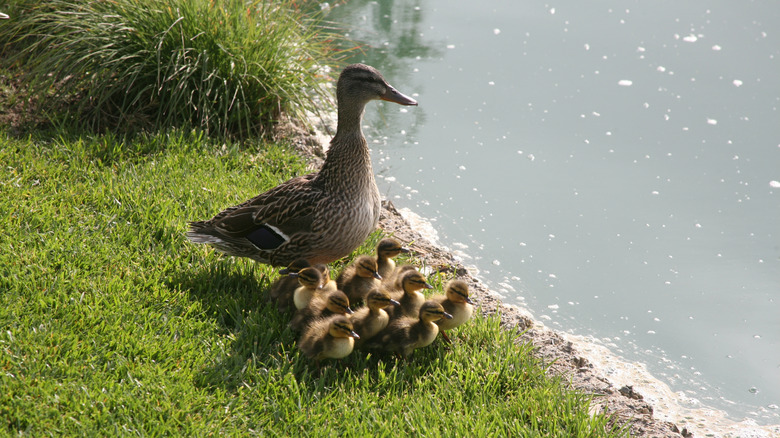How To Tell The Sex Of A Baby Mallard
Mallard ducks are one of the most popular species to keep in a poultry yard or backyard pond. A baby mallard is born ready to swim with chocolate and yellow markings and a dark line through their eye. Although both males and females look nearly identical, careful observation can help you discern which will grow into a young male mallard duck and which will be female.
Young mallard duck sounds
Listening to the sounds that ducklings make can be one of the easiest ways to tell males from females at an early age. A young male mallard duck tends to be quieter and less vocal than a female of the same species.
That monotone peeping you hear comes from the male duck. As he gets older, his voice will mature into monotone grunts. Female mallards are the only one of the species that actually quack. Female ducklings will "peep peep peep" and then insert a random, raspy noise that might sound more like a cough until she matures enough to quack.
By 10 weeks old, male and female ducks take on the full voice characteristics of their gender. Males sound more whispery and low in tone. Females will vocalize in loud quacks that she will use for calling her ducklings to her when she becomes a mother.
Baby mallard physique
At just a couple of days old, male mallard ducklings tend to be taller and wider than their female counterparts. A young male mallard duck will have wider-spaced legs, bigger feet, and longer legs than the female. Despite the males' rapid growth, females are the first to sprout feathers on the wings. Both sexes are born with thin, papery-feeling wings. Within the first few days, the wings of a female will start to feel more substantial as her feathers prepare to emerge.
When you first see feather sprouts along the wing edges, put a zip tie around one leg of each duckling that has feathers erupting and cut off the excess to form a leg band. These early feathering mallards are likely to be your female birds. The zip tie should be loose around the leg but don't leave so much space that another duck's beak could get caught in it. Carefully monitor the leg band as the ducklings grow to prevent it from cutting off circulation. Once mature feathering comes in, snip off the zip tie.
Check out plumage
Mallard ducks become fully feathered at about 10 weeks old; however, plumage can be deceiving at that point. Mallards feather out by 6 to 8 weeks old but don't reach sexual maturity until about 1 year old.
Males and females can look a lot alike in their plumage until males come into their breeding colors with distinctive green heads. However, you might see a few green feathers appear here and there, letting you know a duck is a drake, not a hen.
Both males and females have blue feathers on their wings, known as a speculum. However, males develop white tail feathers, light feathers along their sides, and a black curly tail feather that females do not have. Females stay drab tan with black markings that will help camouflage them among the rushes while nesting.
Last resort — vent sexing by a professional
A sure way to tell whether you have male or female ducks is to vent sex them at 1 to 2 days old (look for the presence of a penis or vagina). However, vent sexing can permanently injure your duckling's tender genitals. Should it be a matter of importance to know the sex of your ducklings before they mature, an avian or farm vet is your best resource for accurately and safely determining this by vent sexing.
